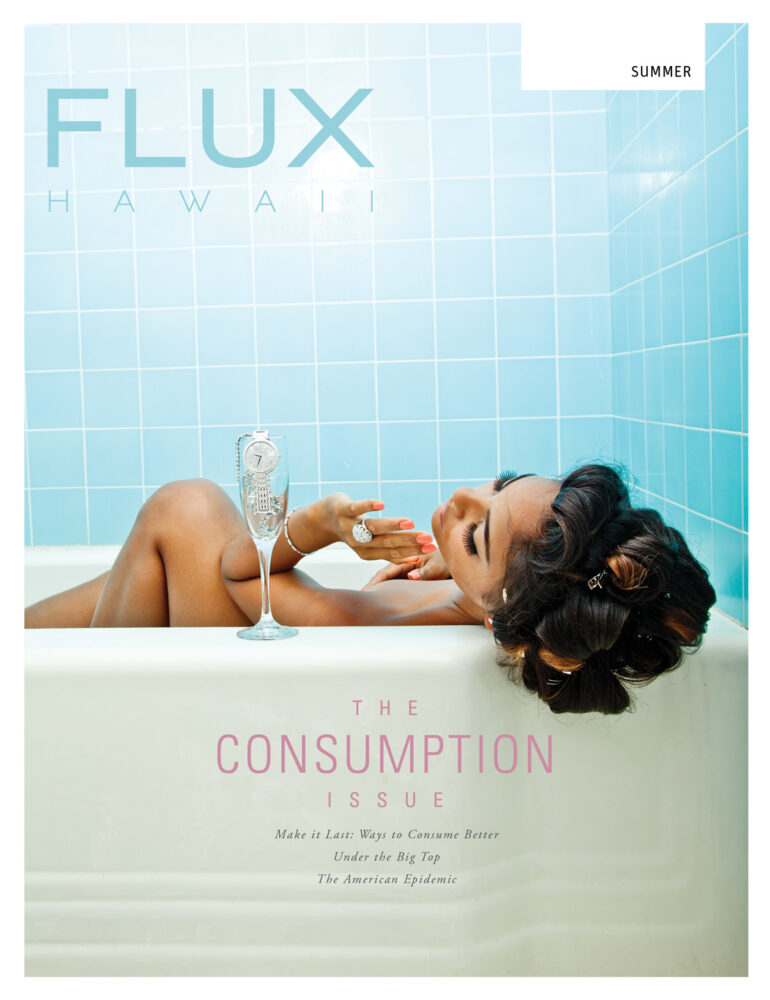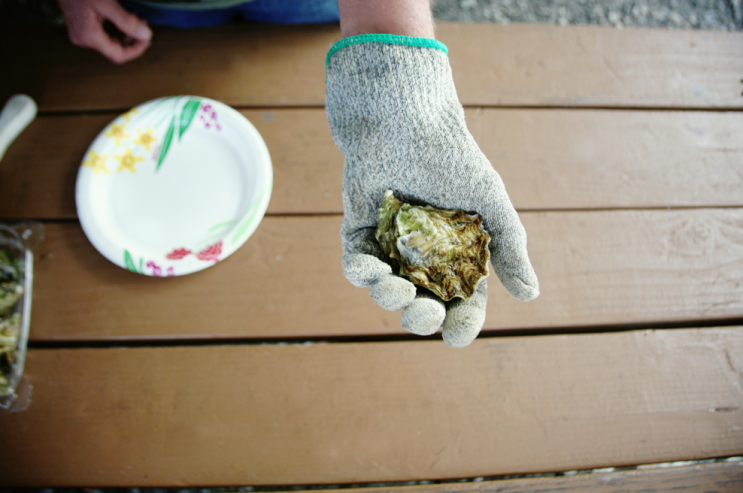

It is no secret that our culture is one of overconsumption. This issue, seeks to catch it all, reflective of the age we find ourselves in today.
Editor’s Letter: About a month ago, a friend took me mantis-shrimp fishing at Magic Island near where the boats are docked. He told me about how he and his dad frequented the area to catch the otherworldly crustacean for bait, flipping rocks and watching for creatures scurrying across the shallow reef. Back then, Magic Island was a place teeming with life, where my friend learned how to fish. Mullet, weke, moi, o‘io, papio—it all could be found at a place that was truly magical. I had gone mantis-shrimp fishing about a decade before, in Kāne‘ohe Bay. Like it was for my friend and his father, the catch was plentiful. We hauled up the shrimp, some nearly a foot long, on bamboo poles split down the center, barbecuing them on the grill with butter later that night. The meat, moist and succulent, was like a mix between lobster and crab.
At Magic Island, as we tiptoed across the reef, moving slowly so as to not scare any unassuming shrimp, we saw a few trumpet fish, some tilapia, lots of furry crabs. But not one mantis shrimp scuttled into sight. After about an hour of creeping and flipping, we call it quits, leaving my friend and I slightly befuddled and wondering, Where have all the mantis shrimp gone?
It is no secret that our culture is one of overconsumption. Bulging landfills; polar bears’ loss of habitat; the most recent, whopping 665 advertising pages of Vogue’s September issue; swelling poverty levels; the self-destructive behavior of social outcasts, stay-at-home moms, scholar students, and starlets alike all give this away. It’s a landscape that would send anyone in his or her right mind scurrying for retreat.
It’s hard to say where the mantis shrimp went. According to one Kāne‘ohe Bay fisherman, they’re still around, though their numbers seem to be dwindling. I am reminded of an interview I did in 2010 for a water-themed issue of FLUX with Keli‘i Kotubetey, who is charged with taking care of He‘eia Fishpond with nonprofit Paepae o He‘eia. Fishponds, he observed, catch all the good and bad. “Anything that’s done uka, above the fishpond in freshwater streams flowing into the pond, ends up affecting the fishpond,” he said. “Same thing in the ocean. … The fishpond can be an indicator of how healthy your ahupua‘a is or how healthy your ocean is.” Like the fishpond, this, our Consumption issue, seeks to catch it all, reflective of the age we find ourselves in today. Though our backdrop is prettier than most, we experience it all, both the good and the bad.
Though we didn’t catch any mantis shrimp that day, my friend stayed behind after we left (mostly to save his dignity) and hooked a to‘au. He also came across a man teaching his grandson how to fish. “He just caught his first one,” the man said, pointing to a young boy proudly holding up an o‘io. They both threw their catches back. No sense in taking what you don’t need.
Enjoy,
Lisa Yamada
Click here to purchase a past issue of Flux.
Featured Stories:


Under the Big Top
At the always anticipated Punahou Carnival, Sonny Ganaden works for minimum wage, exploring the annual event as a metaphor for local economic inequality.


The American Epidemic
With prescription drug overdose deaths now outpacing those caused by heroin and cocaine combined, Hawaiʻi will soon face a bleak reality of those consumed by the scourge.


Get Shucking
For the first time in Hawai‘i, oysters grown in Moli‘i Fishpond at Kualoa Ranch will be available for sale and public consumption.


I Wanna be Loved by You
What more is consumption than goods and glitter? A FLUX fashion spread inspired by Marilyn Monroe and the sumptuous color of summer.
